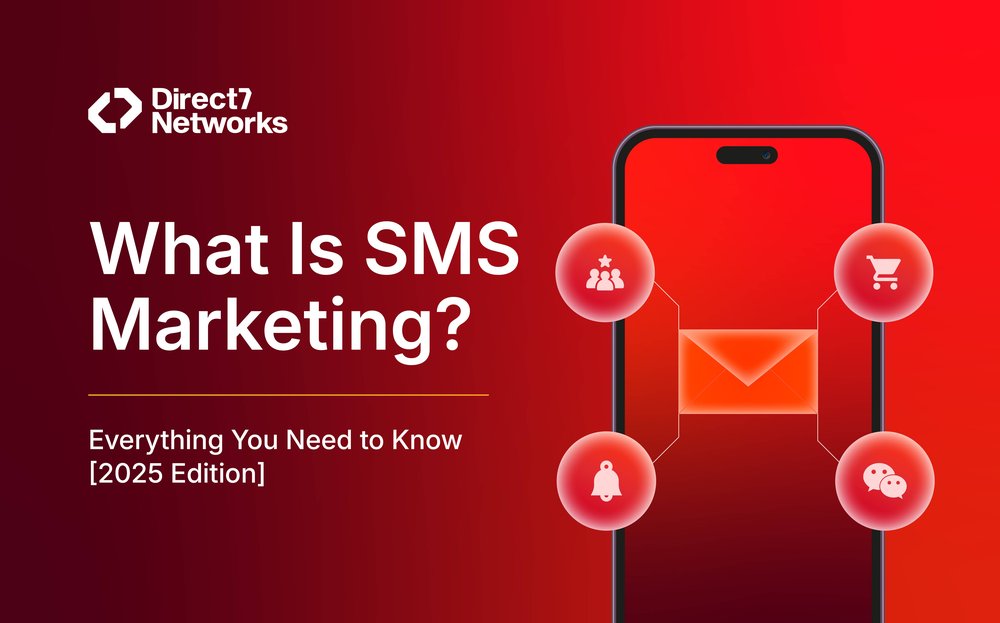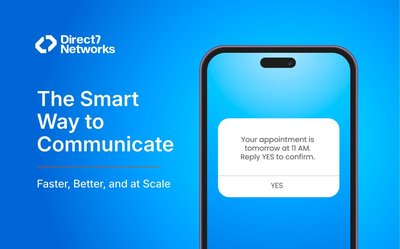SMS may not be flashy, but it remains one of the most powerful direct communication channels available today. A short text lands exactly where people look first: their lock screen. This immediacy is critical when you need instant action for:
- Confirmations
- Flash sales
- Delivery updates
- Appointment nudges
Recent industry benchmarks show that SMS continues to outperform email in conversion rates and can drive revenue quickly when used with care.
But caution matters: The same strengths that make SMS effective also make misuse costly.
- Poor consent practices.
- Sloppy templates.
- Bad timing.
These don’t just lead to opt-outs,they can trigger carrier filtering, legal risks, and brand damage.
Strong SMS programs are deliberate, measured, and designed for clarity.
When to Use SMS
Think of SMS as a one-line nudge designed to spark action within minutes. High-value use cases include:
- Immediate transactional messages → OTPs, order confirmations, delivery windows.
- Appointment confirmations and reminders → Reduce no-shows effectively.
- Short, time-limited offers or cart recovery nudges.
- Real-time logistics updates → e.g., “Your driver is 10 minutes away.”
- Two-way confirmations/workflows → e.g., Reply C to confirm, R to reschedule.
Best practice: If a message requires detail, nuance, or sensitive data, don’t overload the SMS. Instead, send a short message with a secure, branded link to the full content. This keeps SMS clean and reduces privacy risks.
How to Write SMS That People Act On
Effective SMS copy is short, clear, and actionable. Use this structure across industries:
- Lead with value → Why should the recipient care right now?
- One simple action → Confirm, click, or reply. Never mix multiple CTAs.
- Trusted sender identity → Use a clear short code or brand name.
- Easy opt-out option → STOP, END, or UNSUBSCRIBE.
- Minimal personal data → Never include sensitive clinical, financial, or private details.
SMS works best when it’s immediate, precise, and respectful of consent and privacy. Used correctly, it delivers unmatched conversion power; used poorly, it creates risks that can outweigh the gains.
Deliverability — What Actually Breaks Campaigns (and How to Fix It)
Most failed SMS campaigns don’t fail because of creative copy—they fail because of poor routing, bad setup, or weak data hygiene.
Best Practices for Strong Deliverability
- Start Small and Warm Up
- Don’t push a new sender ID to full volume overnight.
- Carriers monitor send patterns and complaint rates—sudden spikes can trigger throttling.
- Clean Your Lists
- Remove bounces.
- Block numbers with repeated complaints.
- Scrub against DND (Do Not Disturb) or opt-out registries as required by local law.
- Use the Right Number Types
- Short codes → High volume, brand campaigns.
- Long numbers (10DLC, international numbers) → Smaller-scale messaging.
- Alphanumeric IDs → Where permitted, for clear sender branding.
- Match your number type to use case and country.
- Maintain Technical Hygiene
- Sign and verify webhooks.
- Handle retries idempotently (don’t double-send).
- Capture delivery receipts to monitor carrier feedback.
- If delivery dips in a region, check approvals and sender registrations first, before blaming copy.
Deliverability depends on hygiene, warm-up discipline, and compliance with local routing rules—not just catchy SMS copy.
Regulation and Consent — The Hard Lines You Can’t Ignore
Rules differ by market, but some non-negotiables are universal:
- Document consent.
- Honor opt-outs immediately.
- Separate transactional and marketing messages.
Regional Rules at a Glance
- EU & UK
- Marketing SMS generally requires explicit opt-in.
- Governed by e-Privacy rules + GDPR principles.
- U.S.
- TCPA and carrier regimes (10DLC, A2P registration) require clear consent records.
- Violations risk fines and carrier blocking.
- India
- Strict DLT (Distributed Ledger Technology) registration for senders and templates.
- Unregistered traffic is blocked at the operator level.
Practical Steps
✔ Record: who opted in, where, when, and exact wording used.
✔ Store channel-level flags (SMS vs. WhatsApp).
✔ Sync suppression lists across platforms → one opt-out stop sends everywhere.
Summary: Consent is not optional—it is the foundation of compliance and deliverability. Treat it as a first-class data object, and design systems to update and honor opt-outs instantly.
Fraud and Safety — New Threats You Must Watch
SMS remains powerful, but it is also a target. Smishing (SMS phishing) and SMS blaster attacks have grown sharply in the last 12–18 months.
Key Risks
- Fraudsters mimic legitimate senders to trick users into clicking malicious links.
- Some exploit network weaknesses to distribute large volumes of harmful texts.
- Regulators and carriers are now blocking suspicious domains and links more aggressively.
Why This Matters
- Operator’s perspective: Unfamiliar domains or unpredictable templates appear risky and may be blocked.
- User’s perspective: Unexpected URLs erode trust and increase opt-outs.
Best Practices for SMS Safety
- Use branded domains → Link directly to your company’s verified domain.
- Avoid random shorteners → Use short links that resolve back to your brand.
- Keep templates predictable → Reduce false positives from carrier filters.
- Leverage link previews/metadata → Build trust with recognizable branding.
Summary: SMS safety is now a trust and deliverability issue. Protect users and your brand by keeping links official, consistent, and transparent.
What to Measure — The Metrics That Matter
Open rates may be interesting—but they don’t drive revenue. What matters is business impact.
Core SMS Metrics
- Revenue per recipient (RPR) or conversion rate → The ultimate ROI metric.
- Delivery rate & carrier status → Delivered, queued, failed.
- Opt-out/complaint rate by campaign → Indicator of fatigue or poor targeting.
- Click-through rate (CTR) + post-click conversion → Measures engagement and intent.
- Program-level metrics:
- Lifetime revenue from SMS subscribers.
- Retention lift.
- No-show reduction (healthcare).
How to Measure Incremental Impact
- Use a small control group that does not receive SMS.
- Compare their outcomes against recipients.
- This reveals true incremental lift, not just surface engagement.
Summary: Measure SMS by its ability to drive real business outcomes—not vanity metrics. Focus on RPR, conversion, retention, and cost reduction, and use control groups to validate impact before scaling.
A Short Launch Plan You Can Use Tomorrow
Getting started with SMS doesn’t require a massive rollout. Begin small, measure outcomes, and expand only when the data support growth.
Step-by-Step Launch Plan
- Pick one clear, low-risk use case → e.g., order confirmations or appointment reminders.
- Build the consent flow → Capture proof of opt-in with timestamp and source.
- Draft templates → Prepare three short messages plus a fallback linking to secure content.
- Integrate with your API → Enable delivery receipts and configure webhooks for replies.
- Run a pilot (500–2,000 people) → Track RPR, opt-outs, and delivery rates.
- Iterate → Adjust copy and timing; introduce a holdout group to measure true incrementality.
- Scale gradually → Add new use cases once early metrics prove success.
If you do only one thing: Keep the initial audience small and focus on business outcomes (RPR, conversions)—not vanity opens.
Quick Checklist
- Consent captured with timestamp and source.
- Opt-outs honored immediately and synced across all systems.
- Templates separated by type (transactional vs. marketing).
- Sender IDs registered where required.
- Delivery receipts + webhook retries handled idempotently.
- Branded HTTPS domains used for all links.
- Pilot includes a control/holdout group.
- Complaint rate monitored; pause campaigns if it rises.
Treat SMS Like a Relationship, Not a Broadcast
SMS is intimate by default. Customers welcome it only when messages are:
- Useful
- Concise
- Timely
If messages feel random, intrusive, or unsafe, both carriers and users will block or report them.
With careful consent management, clean lists, and measurable goals, SMS continues to deliver unique value in 2025.
- Use it small and focused.
- Measure outcomes consistently.
- Scale only when the data supports it.
SMS marketing in 2025 is not about volume—it’s about precision, trust, and measurable business impact.







